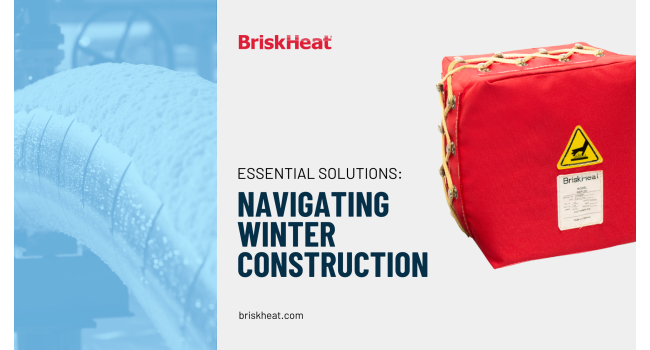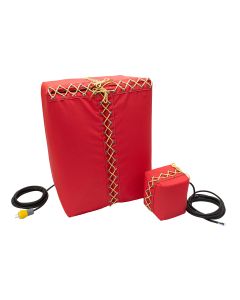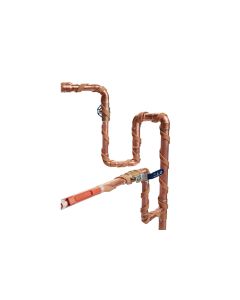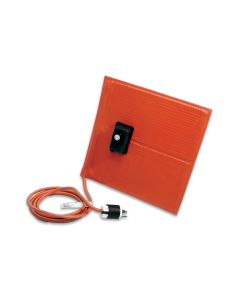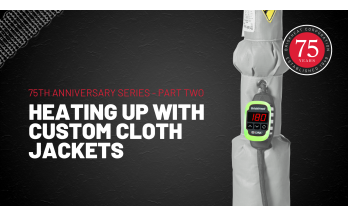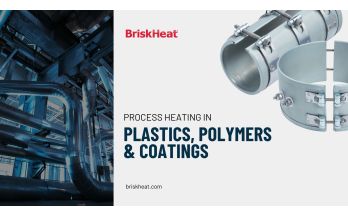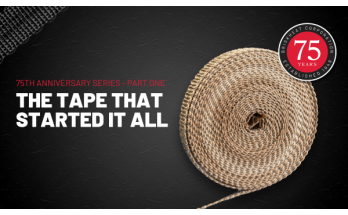Construction occurs throughout the year, yet cold temperatures significantly impact the industry. In previous posts, we have discussed maintaining warm temperatures for conveyors and hoppers to prevent condensation and moisture in dry chemicals, along with the importance of viscosity control in liquid mixing. Today, we’ll delve into other cold-weather-specific issues in construction and how BriskHeat products provide solutions.
Balancing Storage and Usage Temperatures for Construction Materials
For a variety of products, from electronics to chemicals, specific temperature ranges are crucial for both storage and application. Storage temperature refers to the range within which a material should be kept to avoid losing its properties. For instance, consider caulk that should be stored at 50 to 80°F (10 to 27°C). If exposed to freezing temperatures, caulk can spoil and lose its adhesive quality, even after thawing. However, caulk remains effective when applied at temperatures ranging from 40 to 90°F. In extremely cold environments, a can be used to keep caulk tubes above freezing until use. For irregularly shaped storage or dispensing containers, the silicone rubber heating tape, with a built-in preset thermostat, can warm objects up to 70°F or 122°F (21°C or 50°C). Insulation also aids in maintaining temperature uniformity and reducing energy consumption.
Concrete's storage and use temperatures are vital. Ideally, it should be stored between 40 to 77°F (5 to 25°C). The temperature during use affects the properties of cured concrete. Optimal curing occurs between 60 to 95°F (15 to 35°C). Below this range, concrete may not cure properly; above it, concrete cures too quickly, leading to weakness. BriskHeat , applied to the exterior walls of batch mixers, can warm the material before adding water. or silicone tape can also be used to heat water before mixing.
Preheating Construction Materials
Some materials, like pipes, metals, and wood, can be stored at sub-freezing temperatures but require preheating before use. Cold weather makes wood more brittle and prone to cracking; therefore, it should be stored in a dry area to prevent moisture absorption. Cold temperatures also increase the brittleness of metal objects, necessitating preheating before forming or welding. Silicone rubber heating blankets and tapes, which are moisture-resistant, are suitable for outdoor use. They are also valuable for emergency de-icing of machinery and materials.
Dry Chemicals vs. Cold Temperatures
Dry chemicals, sometimes know as bulk solids are often stored and dispensed through hoppers. These are often dispensed by weight. In cold weather, condensation can change the weight of the material, but also cause clumping that obstructs dispensing and mixing. Silicone rubber or metal housed hopper heaters can be affixed to hoppers and conveyor systems to prevent dry chemicals from absorbing condensed liquids from the atmosphere. Warmer dry chemicals are less likely to adhere to container surfaces during dispensing and can be mixed more uniformly than bulk solids containing moisture.

